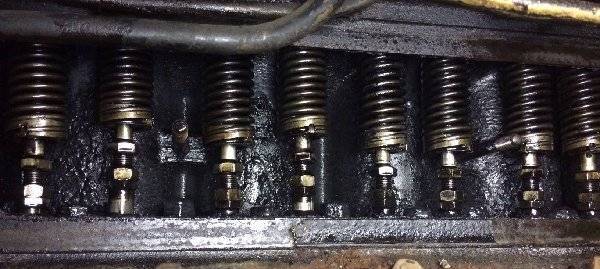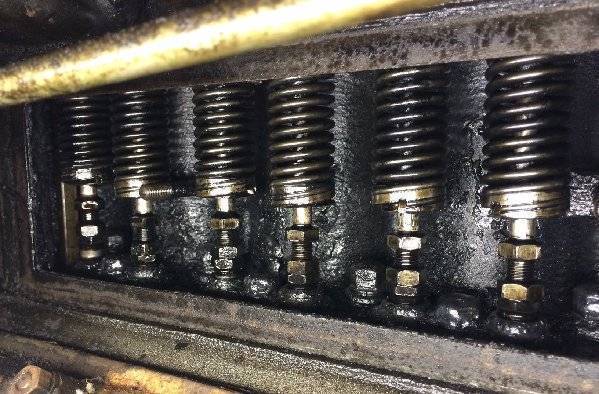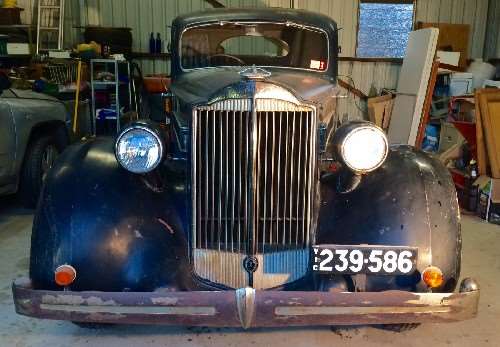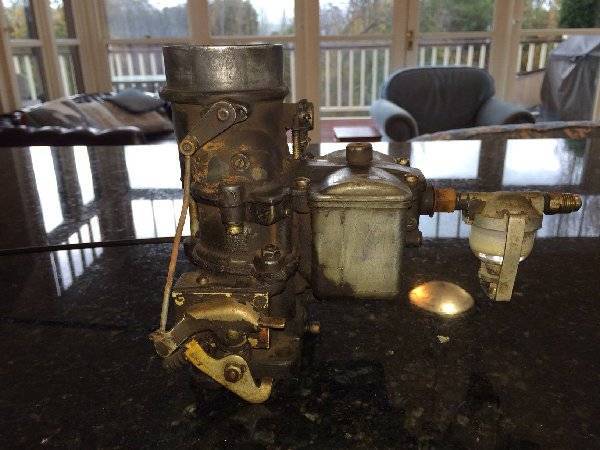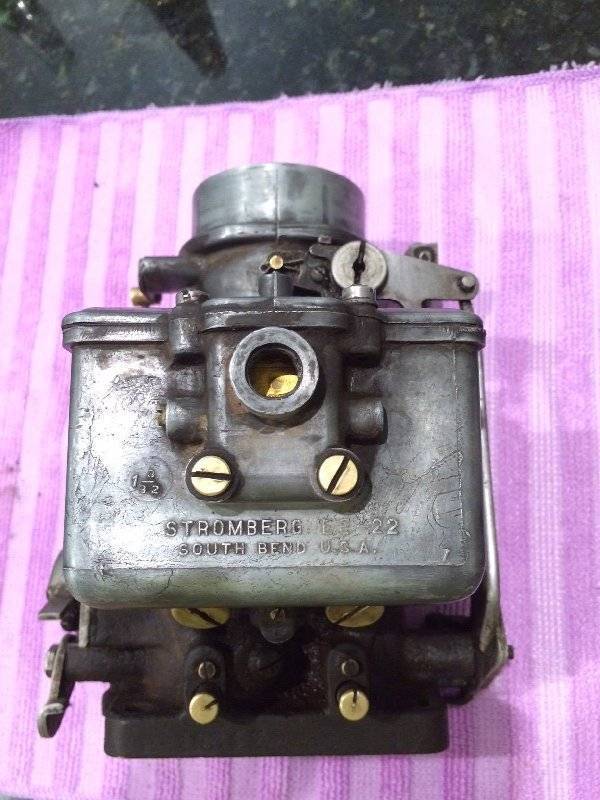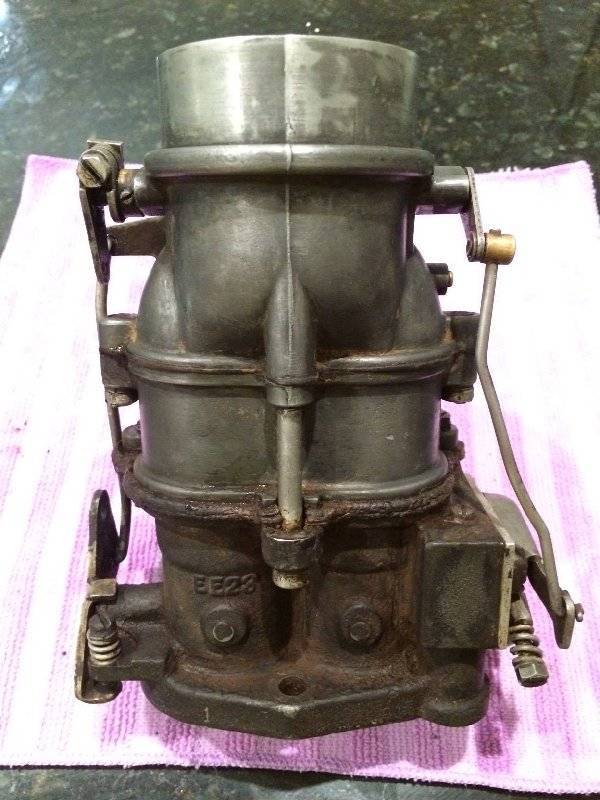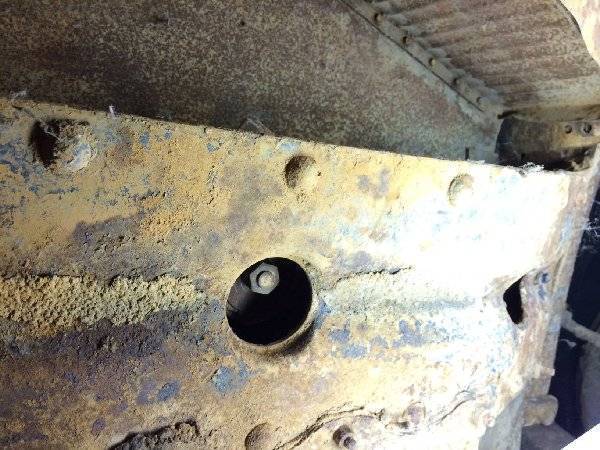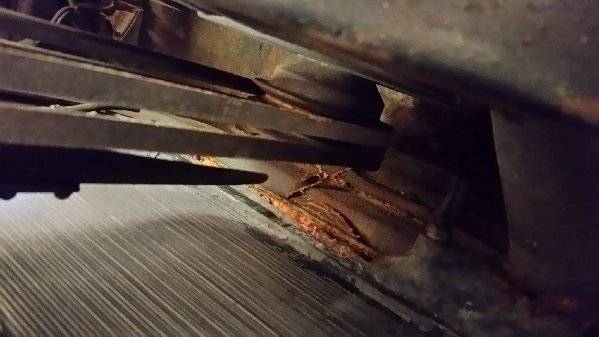|
Re: John's 1935 1201 Coupe for Two or Four Passengers, RHD in Tasmania
|
||||
|---|---|---|---|---|
|
Just can't stay away

|
Hello John,
The other common solution to use is distillate,regardless of what you choose remove the valve covers and use a spray to get some of the rust penetrate into the guides. Then have some one watch the valve stems as you rock the rear wheel back and forth to see if there is any movement. Regards Pepe Packard
Posted on: 2016/5/8 4:45
|
|||
|
||||
|
Re: John's 1935 1201 Coupe for Two or Four Passengers, RHD in Tasmania
|
||||
|---|---|---|---|---|
|
Just can't stay away

|
John,
The product we used in the marine industry is called YEILD it is branded CHEMSEARCH and is made in Alexandria N.S.W. comes in a spray can it is ery effective but it is not cheap. Regards Pepe
Posted on: 2016/5/8 4:52
|
|||
|
||||
|
Re: John's 1935 1201 Coupe for Two or Four Passengers, RHD in Tasmania
|
||||
|---|---|---|---|---|
|
Home away from home
|
Seems to me the quickest and easiest thing to do would be to simply remove the head. All will be revealed.
(o{}o)
Posted on: 2016/5/9 10:42
|
|||
|
We move toward
And make happen What occupies our mind... (W. Scherer) |
||||
|
||||
|
Re: John's 1935 1201 Coupe for Two or Four Passengers, RHD in Tasmania
|
||||
|---|---|---|---|---|
|
Just can't stay away
|
Thanks for your interest, JW. That seems like a sensible idea, except:
1. I'm learning as I proceed. Never removed or replaced a head before. Don't want to do any harm with my lack of skill. 2. I live in a place quite isolated from the expertise of the Packard community. I'm really relying on the help I can get from the mainland and international community over the web. So far the help has been fantastic, but I don't want to over-extend my welcome by asking for a step-by-step description of how to remove and install the head, yet. Think I'd better just proceed cautiously for now. :) Bought acetone and ATF yesterday; will be visiting the car this afternoon to pour in the mixture. Cheers, John
Posted on: 2016/5/9 17:16
|
|||
|
||||
|
Re: John's 1935 1201 Coupe for Two or Four Passengers, RHD in Tasmania
|
||||
|---|---|---|---|---|
|
Just can't stay away
|
Today I:
1 Mixed the acetone and ATF and distributed it into the cylinders. I will let it percolate while I organise a few other preliminaries to a restart attempt. 2 Removed the valve covers for a look. No sludge or obvious corrosion or problems to my untrained eye. Pictures attached; do these look normal? 3 The valve cover gaskets are fragile and crumbly, but I refitted them. Should I prioritise replacing them or worry about it later? 4 I cleared some more junk to finally allow a frontal picture. Unfortunately it clearly shows the poor condition of the bumper and radiator shell, and louvres, and the ill fitting sealed beams. All will be addressed in time. More soon. Cheers for now, John
Posted on: 2016/5/10 6:02
|
|||
|
||||
|
Re: John's 1935 1201 Coupe for Two or Four Passengers, RHD in Tasmania
|
||||
|---|---|---|---|---|
|
Forum Ambassador

|
Valve area looks normal enough, but that doesn't mean one or more valves might not be rusted in the guide. If that's so and it (or they) don't free up on their own you're almost certainly going to have to pull the cylinder head which really isn't a daunting task even for someone without experience.
When the engine finally comes to life it will probably leak oil with old and crumbly valve cover gaskets, so you'll need them sooner rather than later. What I do when installing new cover gaskets is use gasket cement between the gasket and the cover and just a thin layer of grease between the gasket and the engine block. In that way you can remove and replace the covers several times without having to replace the gaskets each time.
Posted on: 2016/5/10 8:17
|
|||
|
||||
|
Re: John's 1935 1201 Coupe for Two or Four Passengers, RHD in Tasmania
|
||||
|---|---|---|---|---|
|
Just can't stay away
|
Thanks again O_D, much appreciated. And pursuant to your broader advice, I have in the last few days ordered:
1 A fuel pump rebuild kit. 2 A Battery. and am in the process of ordering 3 A carburetor refurb kit. 4 A gasket set. I've taken the carburetor home to clean it. My wife is overseas at a conference, so surely the kitchen bench is perfect for the task? (A considerable mess was made, but I think I cleaned it up enough to avoid detection... ;) I don't want to dismantle the carburetor without the surety of the refurb kit here, so I've just been scrubbing the 81 year accumulation of baked grime from the exterior. I've discovered that it is identified on the inlet side as an EE-22, and on the lower casting as an EE23. Can I assume this inconsistency is of no consequence? Another question for the experts, please; one task in the near future is to flush the radiator and cooling system. I went under the radiator to look for where it drains. The base of the radiator has three bolts, one of which is central and appears to hold in place a plug-like disc over a large square of gasket material. Is this the place from where the radiator will drain if I flush it from above? It is difficult to access as the base is encased by a shroud. (Pic attached) As always, thanks for all your help, everyone. Cheers, John
Posted on: 2016/5/15 5:53
|
|||
|
||||
|
Re: John's 1935 1201 Coupe for Two or Four Passengers, RHD in Tasmania
|
||||
|---|---|---|---|---|
|
Home away from home
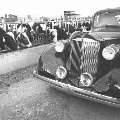
|
John, there should be a peacock on the engine side of the radiator to drain it. The big bolt you're looking at is holding the radiator in place. It's a little dark but you can see the drain in this picture.
Posted on: 2016/5/15 8:36
|
|||
|
I can explain it to you but I can't understand it for you
 Bad company corrupts good character! Farming: the art of losing money while working 100 hours a week to feed people who think you are trying to kill them |
||||
|
||||
|
Re: John's 1935 1201 Coupe for Two or Four Passengers, RHD in Tasmania
|
||||
|---|---|---|---|---|
|
Forum Ambassador

|
John, your carburetor is a mix of parts, the EE-22 was used in 1933 and 1934, and the EE-23 superceded it for later years. Also the Eight used a smaller version than the Super Eight (smaller venturi size). The EE series was also used by Buick, Chrysler, Nash, Studebaker, Lincoln, Hupmobile, & Graham and each had their own specs, jet sizes, etc. so there are many variants. What you have is certainly a mongrel but it may perform OK, most important is that it is properly sized to the engine. Your venturi size should be 1-3/32 (may be marked - look down the bore); if it's marked 1-3/16 it's from a Super Eight. The internal parts like jets are marked with part numbers so you check and see what you have, but my suggestion would be to clean it thoroughly, set the float height etc. to specs and then see how it performs. If there are issues, we can go from there.
Posted on: 2016/5/15 15:56
|
|||
|
||||

 (185.00 KB)
(185.00 KB)